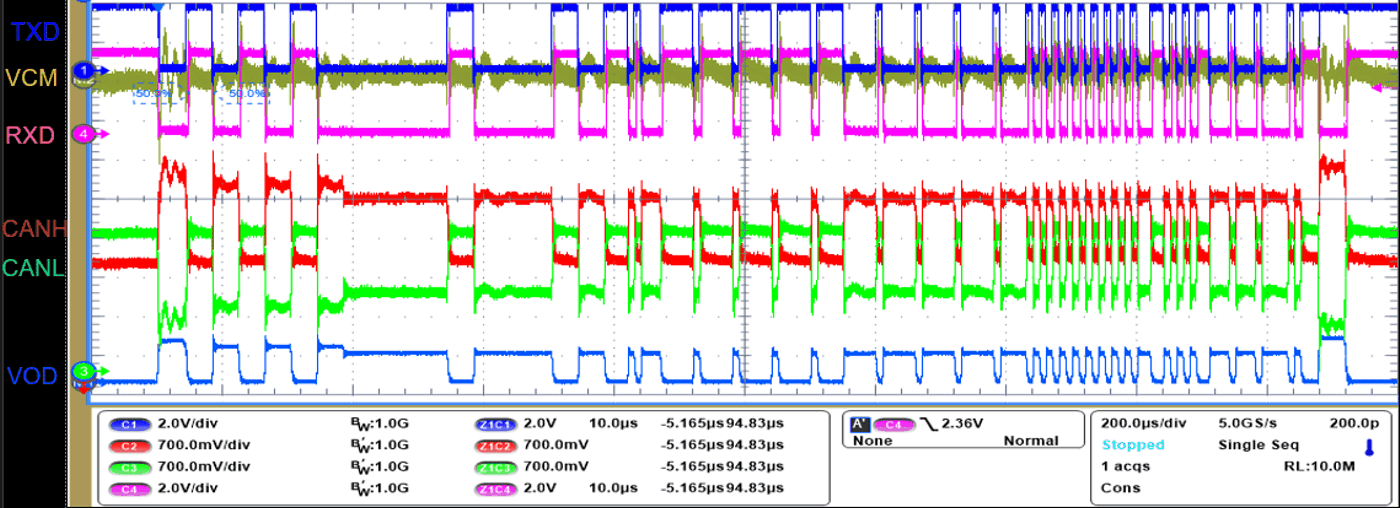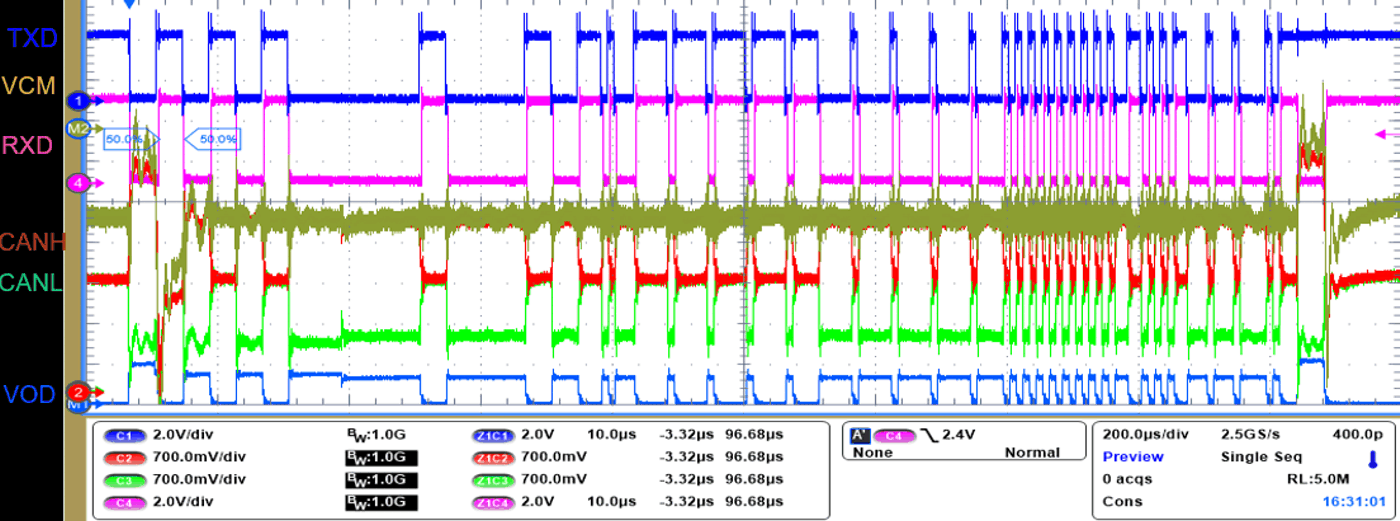SLLA636A June 2024 – August 2024 TCAN3403-Q1 , TCAN3404-Q1
4 Interoperability (IOPT) of TCAN340x-Q1
As stated in the previous section, the TCAN340x-Q1 recessive biasing of CAN high and CAN low terminals is 1.9V. This minor shift in common-mode voltage (compared to 2.5V for standard 5V CAN transceivers) falls within the common-mode voltage range of −12V to +12V specified in ISO 11898-2 (2024). Also, this minor shift in recessive bias level is inconsequential to the extended ±30V common-mode voltage range of the TCAN340x-Q1 when operating at 3.3V, allowing the TCAN340x-Q1 to communicate seamlessly with any other ISO 11898-2-compliant transceivers. The TCAN340x-Q1 is fully interoperable with other transceivers on the same bus powered by a 5V supply.
TI’s TCAN340x-Q1 3.3V CAN transceiver family has been successfully tested by the internationally recognized third-party communications and systems group to the interoperability test specification for a high-speed CAN transceiver. The TCAN340x-Q1 devices successfully passed homogeneous and heterogeneous network testing, and certificates are available upon request.
In the C&S IOPT tests, TCAN340x-Q1 was tested in a 16-node linear homogenous network with all nodes at 2Mbps, and the device was tested in an 8-node homogeneous linear network at 5Mbps. Additionally, it was with a 16-node 2Mbps network testing under heterogeneous condition (specifically four nodes being TCAN340x-Q1 and 12 nodes being golden reference 5V CAN transceivers). Similarly, an 8-node 5Mbps network was tested in heterogeneous condition (two nodes being TCAN340x-Q1 and 6 nodes as golden reference 5V CAN transceivers). Under all network conditions, failures such as CAN bus short to GND, CAN short to battery, ground shift between nodes and disconnection of nodes were intentionally introduced in the network on startup, then failure was removed and communication integrity was checked. Additionally, TI performed internal testing for various different networks (multi-node complex star topologies) with and without arbitration, and TCAN340x-Q1 passed IOPT under all network conditions. Below are two waveforms during arbitration for homogeneous (all 5V nodes) and heterogeneous (three TCAN340x-Q1 and 8 standard 5V CAN nodes) 11-node complex triple star network tested at 2Mbps data rate (with 500kbps arbitration). Waveforms clearly demonstrated RXD without any errors. Even though bus common mode VCM movement occurred during the frame for heterogeneous condition, differential bus and RXD waveforms remained undisturbed and comparable to all 5V homogeneous network conditions.
Below are two waveforms during arbitration for homogeneous (all 5V nodes) and heterogeneous (three TCAN340x-Q1 and 8 standard 5V CAN nodes) 11-node complex triple star network tested at 2Mbps data rate (with 500kbps arbitration). Waveforms clearly demonstrate RXD is received without any errors. Even though bus common mode VCM movement happens during the frame for heterogeneous condition, differential bus and RXD waveforms remain undisturbed and comparable to all 5V homogeneous network condition.
 Figure 4-1 5V Homogeneous Network CAN FD
Frame Waveform
Figure 4-1 5V Homogeneous Network CAN FD
Frame Waveform Figure 4-2 3.3V and 5V Heterogeneous
Network CAN FD Frame Waveform
Figure 4-2 3.3V and 5V Heterogeneous
Network CAN FD Frame Waveform